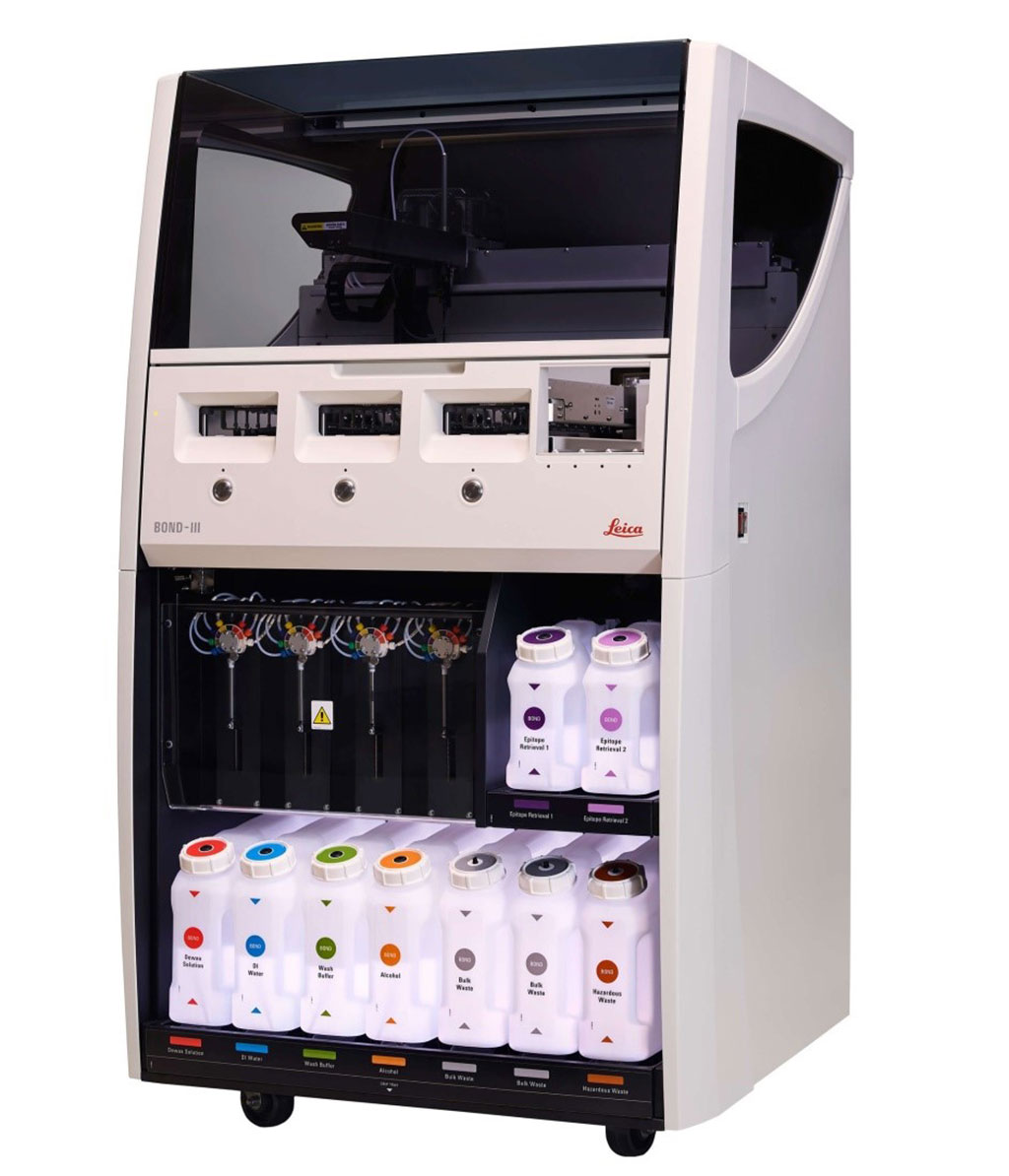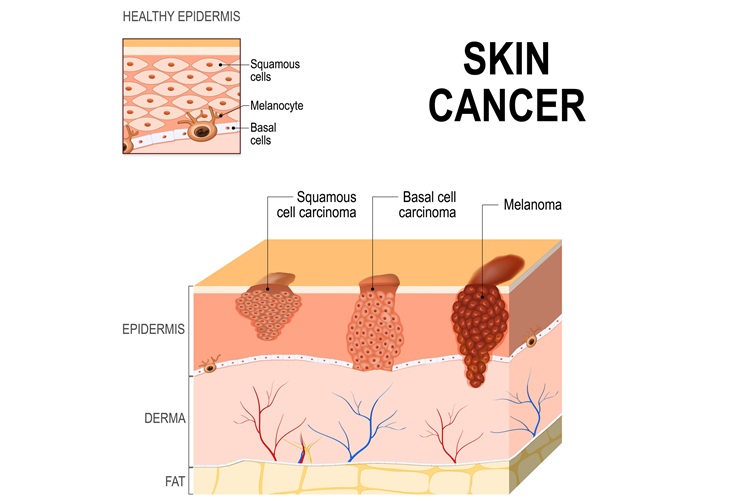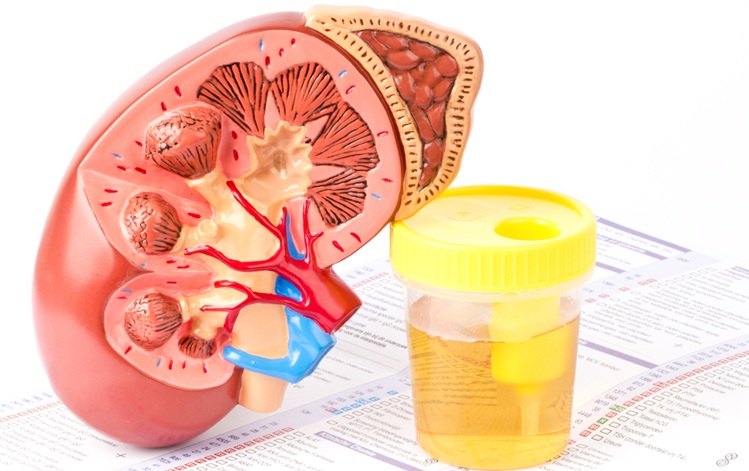Low-Cost Transcriptional Diagnostic Accurately Categorizes Lymphomas
|
By LabMedica International staff writers Posted on 14 Jun 2021 |

Image: An automated Leica BOND-III immunostainer (Photo courtesy of Leica Biosystems)
Lymphoma is a cancer of the lymphatic system, which is part of the body's germ-fighting network. The lymphatic system includes the lymph nodes (lymph glands), spleen, thymus gland and bone marrow. Lymphoma can affect all those areas as well as other organs throughout the body.
Many subtypes of lymphoma can be effectively treated with available therapies, including chemotherapies, monoclonal antibodies, or small molecule–targeted agents. As a result, there is a pressing need for inexpensive, accurate, and operator-independent diagnostics to guide therapeutic selection for patients with lymphoma.
An international team of medical scientists led by the Fred Hutchinson Cancer Research Center (Seattle, WA, USA) collected Formalin-fixed Paraffin-embedded (FFPE) biopsy specimens obtained at Instituto de Cancerología y Hospital Dr. Bernardo Del Valle (INCAN, Guatemala City, Guatemala), that were performed because of clinical suspicion of lymphoma over a 13-year period. This included 3,015 tissue blocks from 1,836 individual patients. Most biopsy specimens were from lymph nodes or secondary lymphoid tissue, but additional extranodal sites (e.g., palate, testicle, eyelid, femur, thyroid, skin, mesentery, tongue, breast, and lung) were included.
One-half of each FFPE block and H&E slides were generated from whole sections and reviewed by two expert hematopathologists. Representative areas were selected, and two cores from each sample were included for tissue microarray (TMA) construction. TMAs were sectioned at 4-μm thickness and subjected to immunohistochemistry (IHC) per routine protocol on automated Leica BOND-III immunostainers (Leica Biosystems, Buffalo Grove, IL, USA) or BenchMark ULTRA, Roche/Ventana Medical Systems, Tucson, AZ, USA). Capillary electrophoresis was run on an Applied Biosystems 3500 or SeqStudio Genetic Analyzer (Thermo Fisher Scientific, Waltham, MA, USA).
The team established a chemical ligation probe-based assay (CLPA) that quantifies expression of 37 genes by capillary electrophoresis with reagent/consumable cost of approximately USD 10/sample. To assign bins based on gene expression, 13 models were evaluated as candidate base learners, and class probabilities from each model were then used as predictors in an extreme gradient boosting super learner. Cases with call probabilities < 60% were classified as indeterminate. Four (2%) of 194 biopsy specimens in storage <3 years experienced assay failure. Diagnostic samples were divided into 397 (70%) training and 163 (30%) validation cohorts. Overall accuracy for the validation cohort was 86%.
After excluding 28 (17%) indeterminate calls, accuracy increased to 94%. Concordance was 97% for a set of 37 high-probability calls assayed by CLPA in both the USA and Guatemala. Accuracy for a cohort of 39 relapsed/refractory biopsy specimens was 79% and 88%, respectively, after excluding indeterminate cases. Machine-learning analysis of gene expression accurately classifies paraffin-embedded lymphoma biopsy specimens and could transform diagnosis in lower- and middle-income countries. The study was published on May 14, 2021 in the journal Blood Advances.
Related Links:
Fred Hutchinson Cancer Research Center
Instituto de Cancerología y Hospital Dr. Bernardo Del Valle
Leica Biosystems
Roche/Ventana Medical Systems
Thermo Fisher Scientific
Many subtypes of lymphoma can be effectively treated with available therapies, including chemotherapies, monoclonal antibodies, or small molecule–targeted agents. As a result, there is a pressing need for inexpensive, accurate, and operator-independent diagnostics to guide therapeutic selection for patients with lymphoma.
An international team of medical scientists led by the Fred Hutchinson Cancer Research Center (Seattle, WA, USA) collected Formalin-fixed Paraffin-embedded (FFPE) biopsy specimens obtained at Instituto de Cancerología y Hospital Dr. Bernardo Del Valle (INCAN, Guatemala City, Guatemala), that were performed because of clinical suspicion of lymphoma over a 13-year period. This included 3,015 tissue blocks from 1,836 individual patients. Most biopsy specimens were from lymph nodes or secondary lymphoid tissue, but additional extranodal sites (e.g., palate, testicle, eyelid, femur, thyroid, skin, mesentery, tongue, breast, and lung) were included.
One-half of each FFPE block and H&E slides were generated from whole sections and reviewed by two expert hematopathologists. Representative areas were selected, and two cores from each sample were included for tissue microarray (TMA) construction. TMAs were sectioned at 4-μm thickness and subjected to immunohistochemistry (IHC) per routine protocol on automated Leica BOND-III immunostainers (Leica Biosystems, Buffalo Grove, IL, USA) or BenchMark ULTRA, Roche/Ventana Medical Systems, Tucson, AZ, USA). Capillary electrophoresis was run on an Applied Biosystems 3500 or SeqStudio Genetic Analyzer (Thermo Fisher Scientific, Waltham, MA, USA).
The team established a chemical ligation probe-based assay (CLPA) that quantifies expression of 37 genes by capillary electrophoresis with reagent/consumable cost of approximately USD 10/sample. To assign bins based on gene expression, 13 models were evaluated as candidate base learners, and class probabilities from each model were then used as predictors in an extreme gradient boosting super learner. Cases with call probabilities < 60% were classified as indeterminate. Four (2%) of 194 biopsy specimens in storage <3 years experienced assay failure. Diagnostic samples were divided into 397 (70%) training and 163 (30%) validation cohorts. Overall accuracy for the validation cohort was 86%.
After excluding 28 (17%) indeterminate calls, accuracy increased to 94%. Concordance was 97% for a set of 37 high-probability calls assayed by CLPA in both the USA and Guatemala. Accuracy for a cohort of 39 relapsed/refractory biopsy specimens was 79% and 88%, respectively, after excluding indeterminate cases. Machine-learning analysis of gene expression accurately classifies paraffin-embedded lymphoma biopsy specimens and could transform diagnosis in lower- and middle-income countries. The study was published on May 14, 2021 in the journal Blood Advances.
Related Links:
Fred Hutchinson Cancer Research Center
Instituto de Cancerología y Hospital Dr. Bernardo Del Valle
Leica Biosystems
Roche/Ventana Medical Systems
Thermo Fisher Scientific
Latest Molecular Diagnostics News
- Urine Test Detects Early Stage Pancreatic Cancer
- Genomic Test Could Reduce Lymph Node Biopsy Surgery in Melanoma Patients
- Urine Test Could Replace Painful Kidney Biopsies for Lupus Patients
- Blood Test Guides Post-Surgical Immunotherapy for Muscle-Invasive Bladder Cancer
- Mitochondrial DNA Mutations from Kidney Stressors Could Predict Future Organ Decline
- Blood Test Could Predict Bariatric Surgery Outcomes in Teenagers
- ctDNA Blood Test to Help Personalize Postsurgical Colon Cancer Treatment
- AI Powered Blood Test Predicts Suicide Risk in Bipolar Patients
- DNA Sensor Enables Molecular Detection from Single Blood Drop
- DNA-Powered Test Accurately Detects E. Coli Lookalike Bacteria
- World’s Fastest DNA Sequencing Technique to Revolutionize NICU Genomic Care
- Blood Test Uses Cell-Free DNA to Detect ALS Faster and More Accurately
- Multi-Cancer Early Detection Blood Test Increases Cancer Detection
- Portable Label-Free Device Tracks Alzheimer's Disease in Real Time
- Liquid Biopsy Test Enables Early Detection of ICI-Related Myocarditis
- Rapid POC Diagnostic Test Detects Asymptomatic Malaria Cases
Channels
Clinical Chemistry
view channel
VOCs Show Promise for Early Multi-Cancer Detection
Early cancer detection is critical to improving survival rates, but most current screening methods focus on individual cancer types and often involve invasive procedures. This makes it difficult to identify... Read more
Portable Raman Spectroscopy Offers Cost-Effective Kidney Disease Diagnosis at POC
Kidney disease is typically diagnosed through blood or urine tests, often when patients present with symptoms such as blood in urine, shortness of breath, or weight loss. While these tests are common,... Read moreMolecular Diagnostics
view channel
Urine Test Detects Early Stage Pancreatic Cancer
Pancreatic cancer remains among the hardest cancers to detect early. In the UK, around 10,000 people are diagnosed each year, but only 5% survive beyond five years. Late diagnosis is a major factor—more... Read more
Genomic Test Could Reduce Lymph Node Biopsy Surgery in Melanoma Patients
Accurately determining whether melanoma has spread to the lymph nodes is crucial for guiding treatment decisions, yet the standard procedure—sentinel lymph node biopsy—remains invasive, costly, and unnecessary... Read moreImmunology
view channel
Blood-Based Liquid Biopsy Model Analyzes Immunotherapy Effectiveness
Immunotherapy has revolutionized cancer care by harnessing the immune system to fight tumors, yet predicting who will benefit remains a major challenge. Many patients undergo costly and taxing treatment... Read more
Signature Genes Predict T-Cell Expansion in Cancer Immunotherapy
Modern cancer immunotherapies rely on the ability of CD8⁺ T cells to rapidly multiply within tumors, generating the immune force needed to eliminate cancer cells. However, the biological triggers behind... Read moreMicrobiology
view channel
Fast Noninvasive Bedside Test Uses Sugar Fingerprint to Detect Fungal Infections
Candida bloodstream infections are a growing global health threat, causing an estimated 6 million cases and 3.8 million deaths annually. Hospitals are particularly vulnerable, as weakened patients after... Read more
Rapid Sepsis Diagnostic Device to Enable Personalized Critical Care for ICU Patients
Sepsis is a life-threatening condition that occurs when the body’s response to infection spirals out of control, damaging organs and leading to critical illness. Patients often arrive at intensive care... Read morePathology
view channel
New Molecular Analysis Tool to Improve Disease Diagnosis
Accurately distinguishing between similar biomolecules such as proteins is vital for biomedical research and diagnostics, yet existing analytical tools often fail to detect subtle structural or compositional... Read more
Tears Offer Noninvasive Alternative for Diagnosing Neurodegenerative Diseases
Diagnosing and monitoring eye and neurodegenerative diseases often requires invasive procedures to access ocular fluids. Ocular fluids like aqueous humor and vitreous humor contain valuable molecular information... Read moreTechnology
view channel
Cell-Sorting Device Uses Electromagnetic Levitation to Precisely Direct Cell Movement
Sorting different cell types—such as cancerous versus healthy or live versus dead cells—is a critical task in biology and medicine. However, conventional methods often require labeling, chemical exposure,... Read more
Embedded GPU Platform Enables Rapid Blood Profiling for POC Diagnostics
Blood tests remain a cornerstone of medical diagnostics, but traditional imaging and analysis methods can be slow, costly, and reliant on dyes or contrast agents. Now, scientists have developed a real-time,... Read moreIndustry
view channel
Qiagen Acquires Single-Cell Omics Firm Parse Biosciences
QIAGEN (Venlo, Netherlands) has entered into a definitive agreement to fully acquire Parse Biosciences (Seattle, WA, USA), a provider of scalable, instrument-free solutions for single-cell research.... Read more
Puritan Medical Products Showcasing Innovation at AMP2025 in Boston
Puritan Medical Products (Guilford, ME, USA), the world’s most trusted manufacturer of swabs and specimen collection devices, is set to exhibit at AMP2025 in Boston, Massachusetts, from November 11–15.... Read more
Advanced Instruments Merged Under Nova Biomedical Name
Advanced Instruments (Norwood, MA, USA) and Nova Biomedical (Waltham, MA, USA) are now officially doing business under a single, unified brand. This transformation is expected to deliver greater value... Read more






















